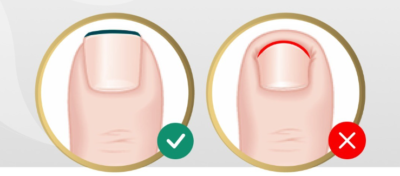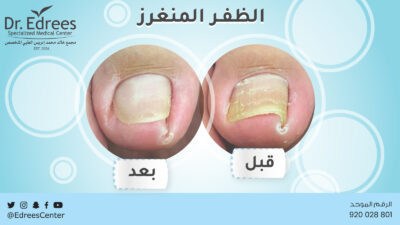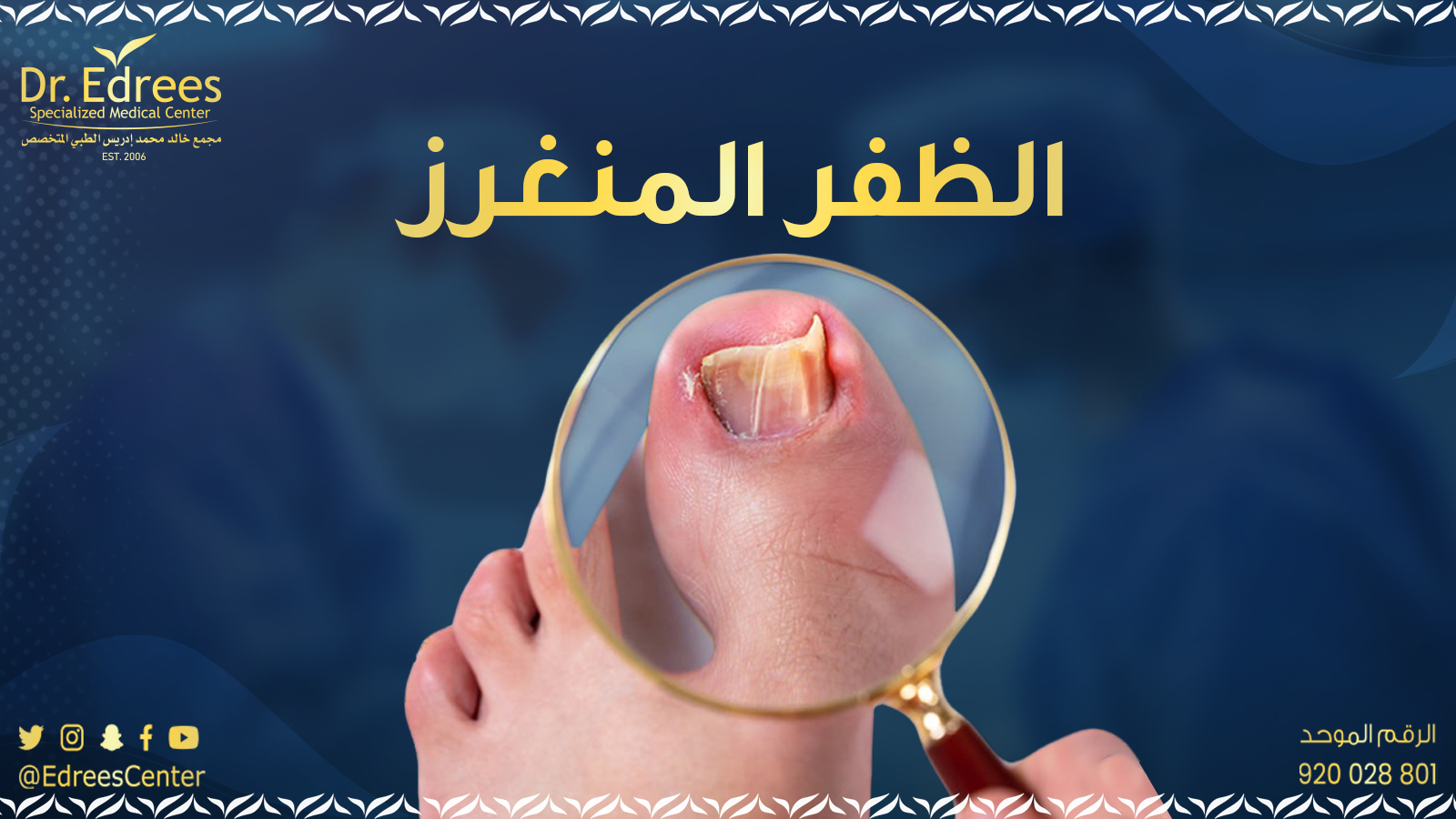Most elderly women and men suffer from ingrown toenail condition. It is the intrusion of the nail in a curved manner, which causes severe pain at the site of the ingrowth. Ingrown nails occur for several reasons, including wrong habits or other reasons. In this article, Dr. Khaled Muhammad Idris – Consultant in Foot and Ankle Medicine and Surgery – about the most important causes of ingrown toenails, the latest treatment methods, and the most important tips for preventing it.
Causes of ingrown nail
- Incorrect nail cutting
This is the reason that happens often and frequently. The correct way to cut nails is to cut them straight, specifically toenails. So that it does not get stuck, if the corners are cut excessively, we find that within one to two weeks when the nail begins to grow again, it will start to get stuck into the skin and they will come up together very painfully.

- Wearing tight shoes
The nail grows continuously without stopping. When wearing very tight shoes, this causes severe pressure on the toenails, which may cause ingrown nails
- The foot was exposed to a specific injury or accident
It could be the result of a bump, blow, or something falling on the nail’s growth center, causing it to warp or change the direction of its growth, so the nail becomes ingrown within two or three weeks.
- Growth of the bone located under the nail plate
It is the most common reason, as the bone does not stop growing in most people, so it continues to grow upward, which leads to a warp in the nail plate and the nail sticks out at the corners, which will often require surgical intervention. For example, ten years ago we notice that the nail plate was very slightly curved, while now it has become very greatly curved, and this hereditary condition is common in some families. We can notice that in some of the feet of elderly ladies or gentlemen, we find that the nails take the shape Circular or curved, resembling horns and inserting into the skin painfully.
If the axe falls on the head, We have an ingrown toenail that is very painful, so what should we do?
Ingrown toenail treatment
The first method: Using equipment and devices that help remove the ingrown nail
- The first method: Using equipment and devices that help remove the ingrown nail
There are many people who make purchases through electronic sales platforms (online), and this equipment may work, but it takes a very long time to benefit from the result. I tried most of these tools on myself, and it turned out that they require a long time and are not suitable in most acute cases. It may work in some chronic cases, but it takes a long time. - The second method: The technique of removing the nail over the outer skin while it is wet
In this method, ingrown toenail pain can be tolerated a little, especially if the condition has been diagnosed for the first time. We can try to make the nail grow out of the skin of the finger after bathing or performing ablution using the fingernail, placing it under the nail of the big toe or other fingers, and we try to lift the nail up while it is wet to bring the nail out to the outer side above the skin. It is very useful in most cases. Suppose that the method did not work and the pain still persists, then we can move to the third method. - The third method: removing the corners and cutting the corners through surgical operations

Simple operations:
Since the idea of going to a beauty salon or men’s grooming salon or bringing nail specialists to the house every two or three weeks to remove the corners, this is a cycle that will never end, which means to us that these people often need simple surgical intervention to remove the corners and cut the corners.
Sometimes, if the condition of an ingrown nail is diagnosed for the first time, the procedure that will be taken by the specialist doctor is to remove the corner of the nail from the inside deeply, which is a little painful and often the person cannot remove it himself. If we remove it, we would be like removing a thorn. The nail or nail plate when… It becomes embedded, and the body treats it as if it were a thorn or a foreign body that must be removed and removed from the body. If there is severe pain, the operation is performed under local anesthesia with the finger to stop the pain.
Many people tell us that they have had the entire nail removed. Removing the entire nail plate is a very temporary issue; Because with a 99% chance, the nail will return as it was before, but after three months of removal. The nail begins to grow from 6-9 months in the feet and from 3-6 months in the hands. What a person does by removing the entire nail plate is only to delay the ingrown nail.Major operation:
It is considered larger than a minor operation, but it does not require hospitals, operating rooms, or general anesthesia. which is next:
- It is performed in the clinic and under local anesthesia to stop the pain.
- The ingrown toenail is removed straight away instead of at an angle.
- After removing the corners or side parts of the nail, a chemical is inserted from under the skin to burn the nail bed and completely eliminate the growth in the corners.
- The wound heals within 3-4 weeks.
The cosmetic result of this procedure is considered a very beautiful result compared to the old and traditional surgical method, in which they usually cut the finger, filed the nail bed, and then sutured it. The possibility of infection is much greater, the cosmetic result is much worse, and the possibility of the ingrown toenail recurrence is much greater. While the result of chemical removal of the nail plant is more positive by 90%, God willing, and the possibility of complications is much less.
It is recommended not to wait too long in cases of ingrown nails, especially in children, because if the period is prolonged and pus appears, it may lead to bone decay and the condition may be difficult to control.
I wish you good health and wellness,,


